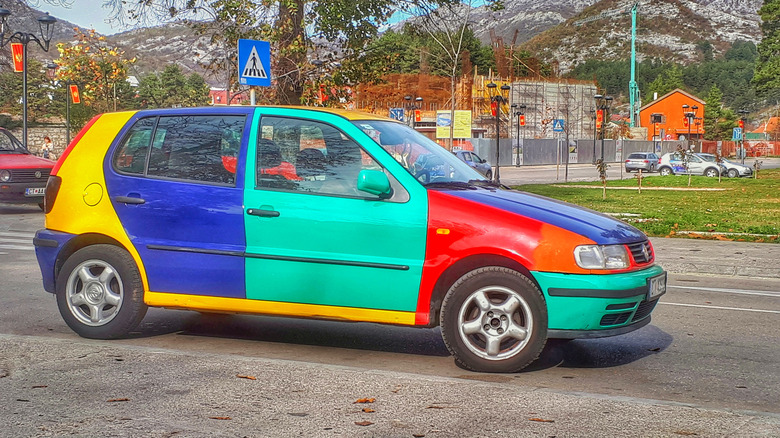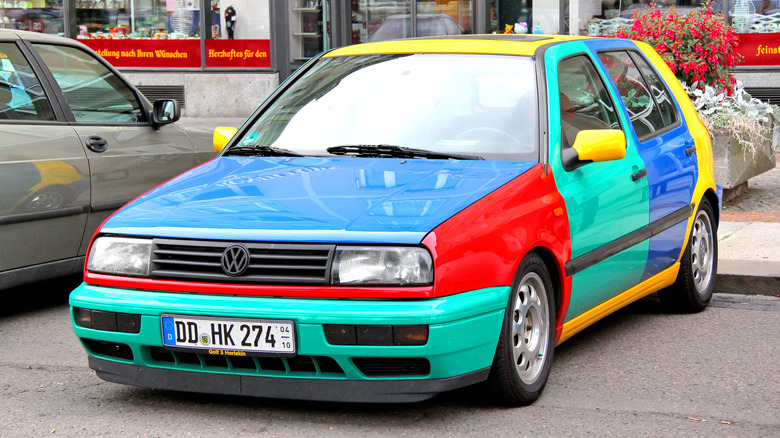The Volkswagen Golf Harlequin Is The Strangest VW You Probably Didn't Know Existed
Volkswagen was having some fun when it came up with the Harlequin. The name and the paint scheme are likely derived from the comedic, clownlike character from bygone days, who wore a colorful costume and liked to play tricks on people. Sorry Batman fans, we're not talking about the bat-swinging Harley Quinn here.
Actually, the whole idea was meant to be a joke... sort of.
In 1995, the European arm of Volkswagen wanted to do something different to celebrate the launch of its latest car, the Polo Harlekin. It featured a new modular design concept called "Baukastensystem," whereby customers could configure their vehicle using a color-coded system to select a drivetrain, equipment, options, and paint.
VW decided it would be fun to quite literally represent its new system through the car's paint scheme. Some believe this idea goes back to the 1960s when ads showed a similar multi-hued Beetle touting how easy it was to get (interchangeable) parts for its little Bug. The four colors sprinkled on the body were Chagall Blue, Ginster Yellow, Pistachio Green, and Tornado Red.
The German automaker only intended to make 1,000 of these circus-quilted Polos. Still, it turns out that demand was significant enough to produce between 3,100 (via Motor Biscuit) and 3,800 (via The Truth About Cars) units instead. Marketers, never afraid to milk a dead horse — or a Polo in this case — decided to give the rainbow paint job a very limited run in North America the following year.
VW went the extra mile with the kaleidoscopic colors
In 1996, VW offered the "masses" a whopping 264 five-door Golf GL Harlequins, conveniently made manufactured in its Puebla, Mexico plant. Yes, you read that right: two hundred and sixty-four. And in a January 2021 article on The Drive, almost half were still on the road as of 2019.
Every Harlequin got sprayed entirely in one of the four offered colors. Only after production line workers finished building the car were the bolt-on exterior panels removed and summarily swapped around (via The Truth About Cars). Owners can tell what the original base color was by looking at the rocker panels or C-pillars (via Motor Biscuit).
But it wasn't random. Volkswagen outlined a method to its madness in a chart showing which panel went on which car and where it needed to go. Another interesting tidbit is that the Chagall Blue and Pistachio Green were exclusive European colors not found on any American Golf model, per The Truth About Cars.
With such a limited production run, these psychedelic Golfs don't pop up for sale very often. About a year ago, a '96 Harlequin with 78,870 on the odometer sold for $25,000. The original retail sticker price was $15,120, which is not a particularly bad investment when you consider most new cars lose about 15% of their value each year after the first year.

